A tribute to a comics and animation visionary…
One of comics’ and animation’s most respected creators, Dwayne McDuffie, was born 59 years ago on Feb. 20, 1962. Sadly, he died far too young — the day after he turned 49 a decade ago — but his legacy remains vibrant and influential.
With that in mind, the creators of the new Access Guide to the Black Comic Book Community — George Carmona III, Dimitrios Fragiskatos and Joseph Illidge — have put together the TOP 13 DWAYNE McDUFFIE STORIES, in honor of his birthday and in remembrance of his untimely death.
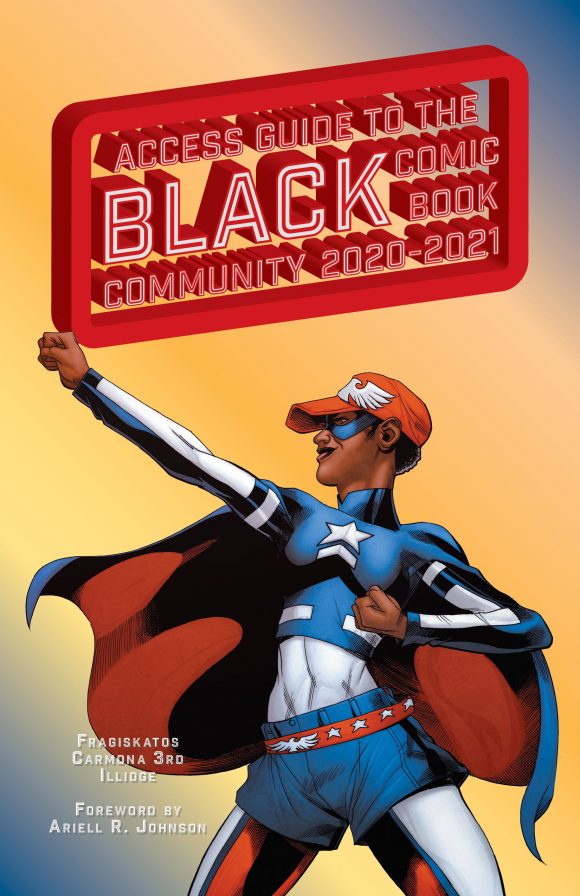
For more info on the Access Guide — including how to get it — click here. You can also get it through Fragiskatos’ Anyone Comics store in Brooklyn. Proceeds will benefit the charitable Dwayne McDuffie Fund, which, among other things, seeks to give scholarships to diverse students.
Longtime 13th Dimension readers may recognize Dimitrios’ name in particular — he was one of the original members of our weekly HOT PICKS team — and he’s written this introduction to the team’s list, which is offered in no particular order.
Take it away, gentlemen.
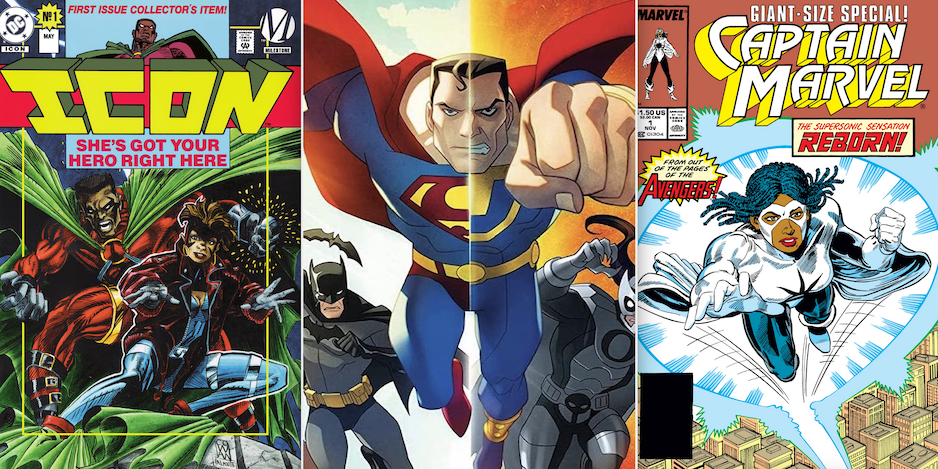
—
By DIMITRIOS FRAGISKATOS, GEORGE CARMONA III and JOSEPH ILLIDGE
Dwayne McDuffie died February 21, 2011, a day after his 49th birthday. At the time, I was working at Midtown Comics (where 13th Dimension editor Dan Greenfield was a regular customer). I was, of course, a fan of his writing on the show Justice League Unlimited and although I knew of his various contributions to comics, I didn’t understand them then as I understand them now.
Since 2011, a bit has changed for me. I’ve opened up my own store, Anyone Comics in Brooklyn, and I have just helped produce a book called Access Guide to the Black Comic Book Community. The purpose of the book is to increase awareness of Black-owned stores and conventions, comics with Black creators, as well as recognizing corporate positions held by persons of color who are instrumental in producing comics.
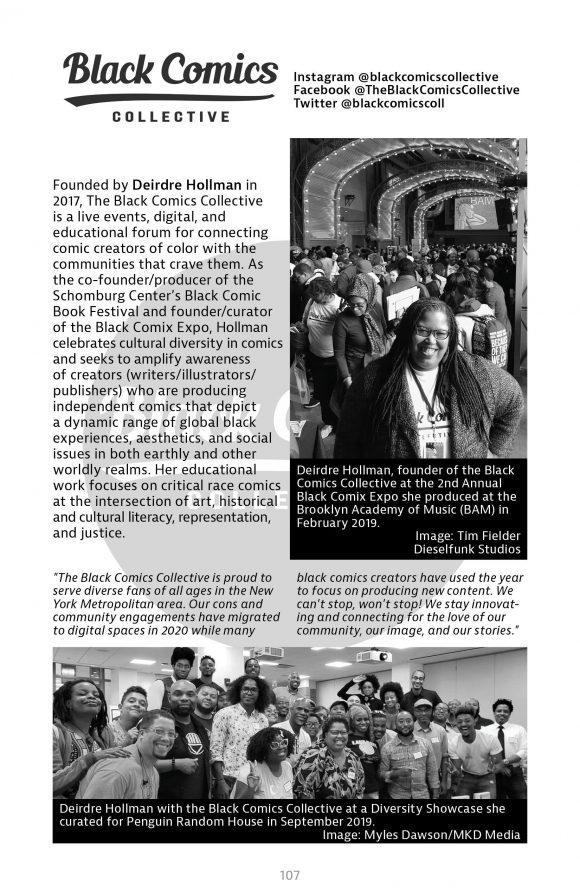
From the Access Guide
Dwayne McDuffie is perhaps best known for co-founding Milestone Media Inc., a publisher that was recognized for its representation both on the pages and behind the scenes. (Milestone, which had a business relationship with DC Comics, is coming back to the publisher later this year, in a fashion.)
But his career, as you will see in the list to follow, was all about making the unseen of comics, seen. It was an honor to work alongside Milestone alumni designer/journalist George Carmona III and editor Joseph Illidge in launching the Access Guide.
All proceeds from the book collected through Anyone Comics will be going to the charitable Dwayne McDuffie Fund, so without further ado, here are the TOP 13 DWAYNE McDUFFIE STORIES, as selected by team Access Guide:
—
Justice League of America (Vol. 2) #22-26, “The Second Coming,” 2008, DC. McDuffie’s Justice League comics run was mired in controversy, as he was prohibited from using most of the characters you would normally see in the JLA. He was quite vocal on social media about it, which seemingly led to his termination. In this particular story, he took advantage of a loose plot thread left by his predecessor, Brad Meltzer, where Vixen’s powers were malfunctioning and she was taking powers from superheroes instead of animals’ abilities. With the help of Animal Man, she taps into her totem, the source of her powers, and gets trapped in the world of Anansi, the spider-god. In this world, the spider-god, who is also the god of stories, presents a new alternate reality Justice League, one derived from different origin stories — and in a meta, breaking-the-fourth-wall way, from story pitches to editorial. How else, but through reading this, did I learn about the original pitch for Black Lightning? In this story he is called the Brown Bomber, and, oh boy… (Art by Ed Benes.)
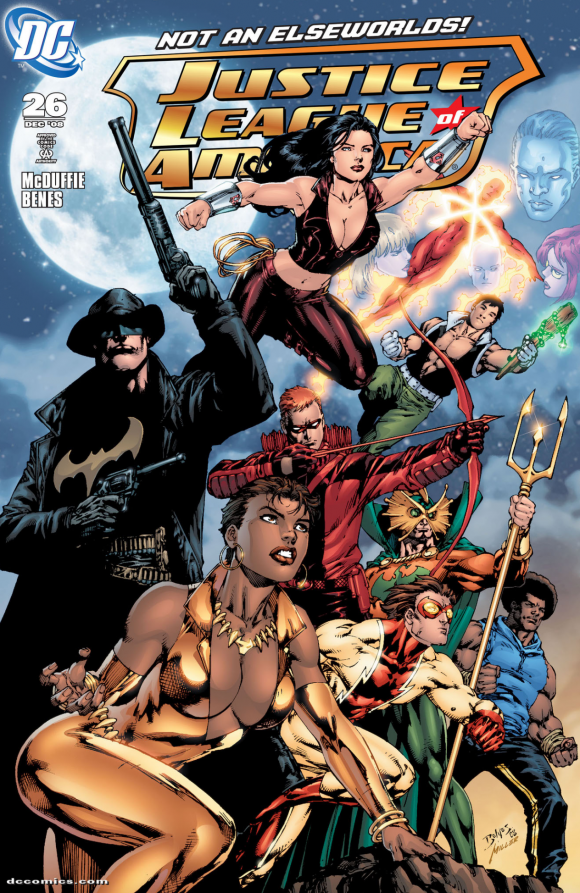
—
Damage Control (Vol. 1) #1-4, 1989, Marvel. Speaking of unseen, who else but McDuffie, along with co-creator Ernie Colón, could conceptualize a construction company that rebuilds things in the city after superheroes and supervillains have their fights? The concept may have been dragged into serious moments for Marvel, including the MCU battles and the Civil War comic, but the original miniseries was bright and comedic, and gave an equally lighthearted view of the Marvel Universe.
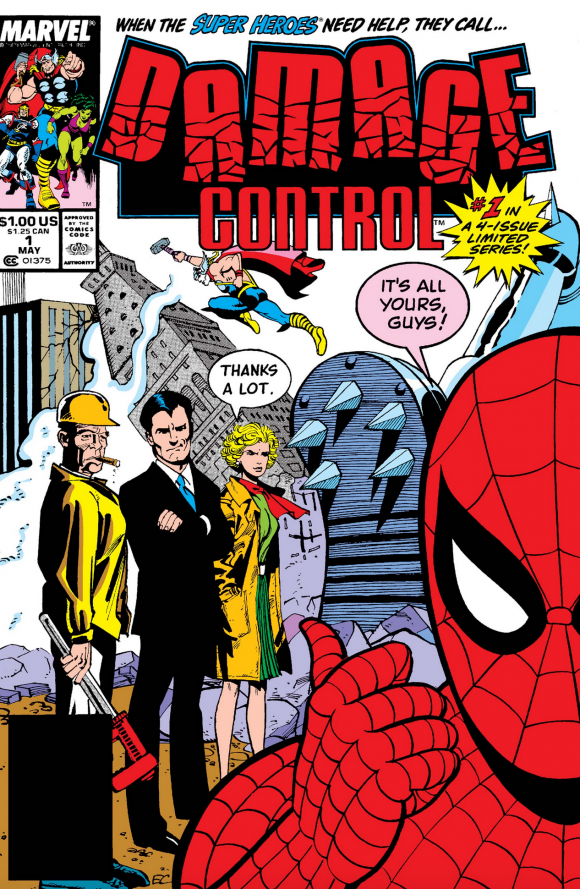
—
Justice League Unlimited (Season 2, Ep. 9), “Question Authority,” 2005. The Question became a favorite on the animated series due to this episode right here. McDuffie, along with the JLU team, used the Question as the audience point of view character, as he echoed the paranoia and potential violence of Watchmen’s Rorschach (who was modeled on him), but with the affability of the equally paranoid, but less heroic Fox Mulder from the X-Files.

The Question investigated information suppression and conspiracies by the government, Cadmus and the Justice League itself. Outpowered and outclassed, this was a great underdog story that would set in motion the growing final conflict between the Justice League and Cadmus.
—
Icon #1, “By Their Own Bootstraps,” 1993, Milestone. None of the speculative DC Comics stories about the Superman origin would dare come close to capturing the context and conveying the reality of two different American histories and cultural perspectives than with the Milestone character known as Icon.
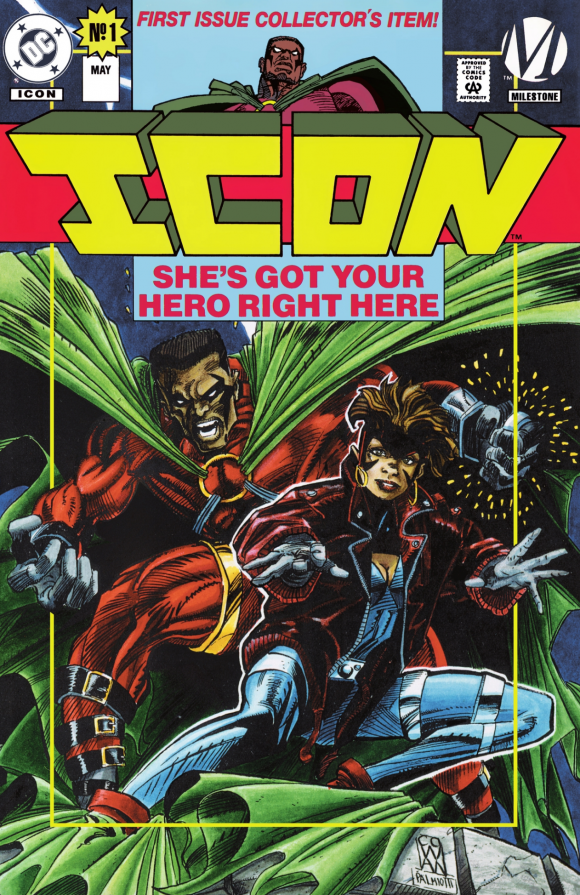
When Icon’s spaceship landed in 1839, he wasn’t taken in by a kindly farm couple, but a slave. He lived into the present as Augustus Freeman the 3rd, and met a teenage girl and aspiring writer named Raquel Ervin, who would show the alien his responsibilities to the Black community and humanity-at-large. The duo became Icon and Rocket, and their stories addressed differences in political views and life perspectives, while tackling mature themes including teenage pregnancy, political corruption, and the tensions between the Black community and the public authorities. Icon, like the rest of Milestone Media, was well ahead of its time, understanding what true maturity in comics was: perspective. (Art by M.D. Bright and Mike Gustovich.)
—
Static #25, “Snow,” 1995, Milestone. Static #25 was written by Ivan Velez Jr. (and drawn by Wilfred Santiago) and NOT by Dwayne McDuffie. McDuffie was editing at the time but I wanted to mention this comic for his editorial. The story was a pretty standard tale of Virgil Hawkins, aka Static, fighting a bad guy while dealing with his personal life, mainly with how his relationship with a girl named Daisy was progressing.
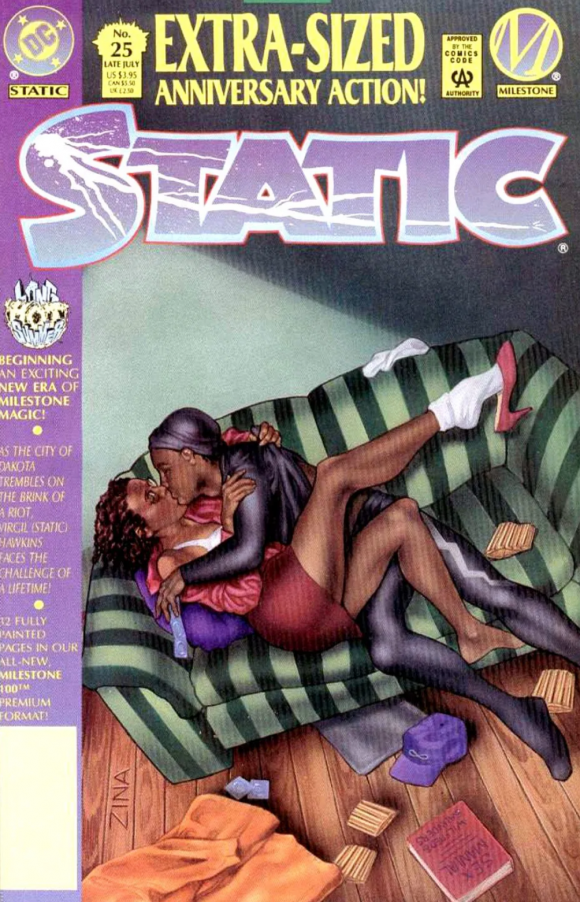
Censored cover
But the story McDuffie shared in his editorial is about the censored cover, and how there was a conflict with DC editorial who was partnered with Milestone in publishing. The original cover depicted Virgil and Daisy kissing clumsily on her couch with some unopened condoms close by. McDuffie wrote about the misrepresentation of sexuality in comics, and how he felt an honest depiction of sex should not be deemed inappropriate, especially in light of how exploitative of women’s bodies contemporary comics of 1995 were.
—
Justice League: Crisis on Two Earths, 2010, DC Universe. This loose adaptation of Grant Morrison and Frank Quitely’s JLA: Earth 2 graphic novel for DC Comics was initially developed as a bridge between the animated shows Justice League and Justice League Unlimited, but budgets being what they were, the plotline was shelved until the direct-to-video market showed its ability to generate money for Warner Bros. And that wait was possibly the best thing to happen as McDuffie took the idea of an evil mirror universe to another level.
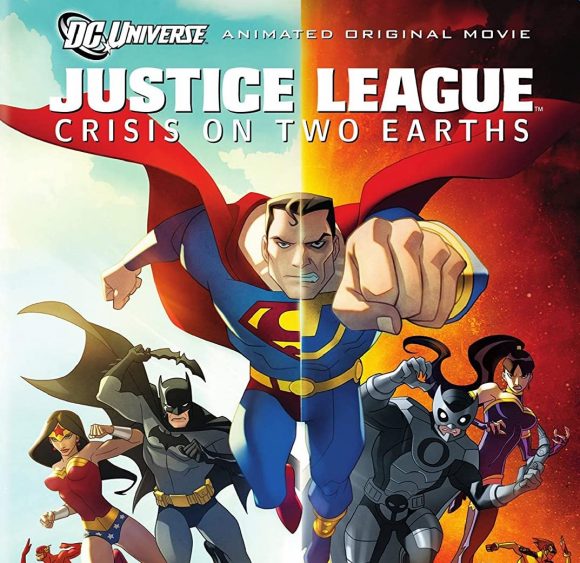
While Morrison’s story looks at a world whose morals and ethics are driven by corruption and aggression, McDuffie’s story takes evil to its next logical level with Owlman. As he did with the Question, McDuffie gave a generation of comic fans the definitive evil Batman, one that terrifies everyone, including his teammates in the Crime Syndicate. And so as not to put it all on Owlman, we also see the darker calculating side of our hero, Batman.
—
Captain Marvel #1, “The Dream Is the Truth,” 1989, Marvel. One of the most highly anticipated characters to come out of Disney+’s WandaVision is Monica Rambeau – who for some is their Captain Marvel. In the comics. before Carol Danvers became the Captain, Rambeau used the name to fight crime.
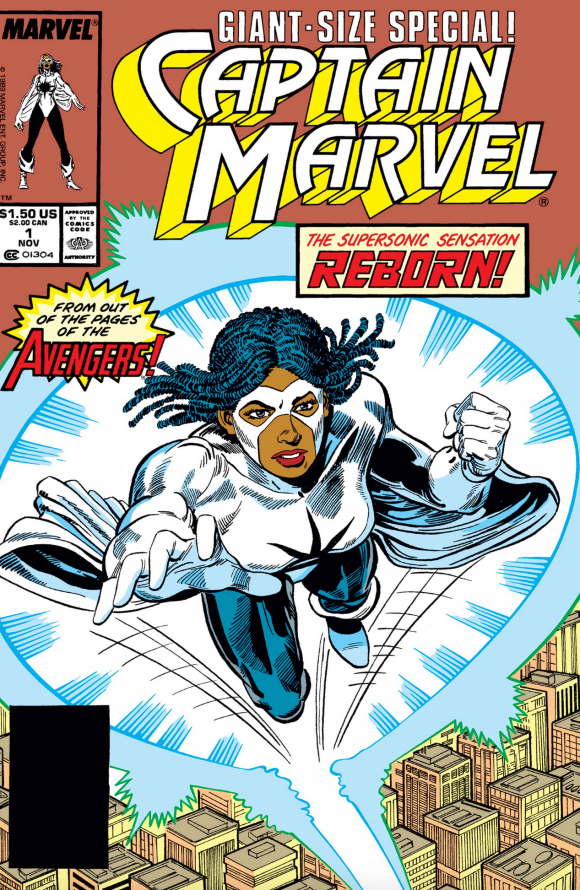
After losing her powers in Avengers #293, she was sidelined from the superhero biz — until McDuffie and Icon artist M.D. Bright retooled and repowered the good Captain. In this one-shot, the one-time leader of the Avengers develops a new superpower of force-field creation and with these new powers gets back into the hero game, starting with the villain Moonstone! (Pencils by Doc Bright.)
—
Justice League Unlimited (Season 2, Ep. 13) “Epilogue,” 2005. In this epilogue to the massive adventure the Justice League had just wrapped up — and intended to be a coda to Bruce Timm’s various series — McDuffie produced an emotionally poignant story of Batman Beyond star Terry McGinnis learning his deeper connection to Bruce Wayne through elder spymaster Amanda Waller. Batman had been a Justice League ally, and a contentious one at that, but this quiet tale shows what he and McDuffie had in common: a quiet empathy behind a strong presence.

—
Justice League Unlimited (Season 3, Ep. 13) “Destroyer,” 2006. When you end a series so strongly, and it resonates with your fandom so well that your show gets unexpectedly renewed for another season, what does your encore look like? For the writing staff of JLU headed by McDuffie it looks like “Destroyer.” In an attempt to reclaim the source of power he had in the previous season, Lex Luthor unwittingly unleashes Darkseid. The cast’s natural character arcs were fuel for the season, culminating in an epic clash with ultimate evil!

—
Hardware #1, “Angry Black Man,” 1993, Milestone. Again ahead of its time, Hardware put classism on full display. Child prodigy Curtis Metcalf was quickly recruited into Alva Industries at a young age due to his mechanical and scientific genius. Although Curt’s education is paid for, and he is the best candidate to become heir apparent to Alva’s empire, he is rejected from being included in any ownership of his gadgets by Edwin Alva, his mentor and surrogate father figure.
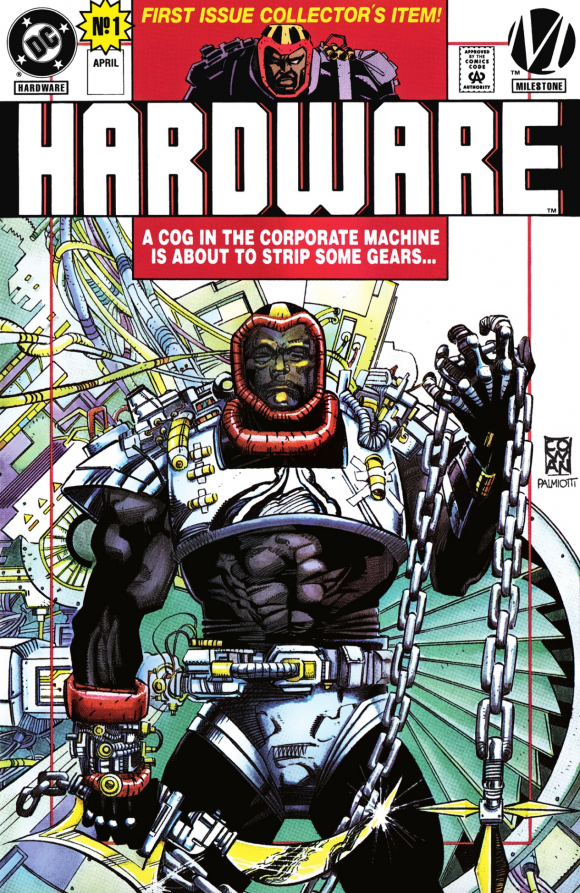
A story of class warfare and the fight for Black people to have equity in their creations, Hardware #1 was both the opening salvo for Milestone’s war on the inequities within the comic book industry, as well as an analogy for the struggles of Black comic book creators historically working for Marvel and DC Comics. (Art by Denys Cowan and Jimmy Palmiotti.)
—
Hardware #32, “Swan Song,” 1995, Milestone. The death and burial of his mentor, nemesis, and eventual benefactor Edwin Alva forces Curtis Metcalf to confront the very real possibility of a future without clear purpose. Within the conflicts with Alva’s children over their father’s empire, and conversations with his allies in their shared war with Alva, Curt decides to use his inherited fortune to create a new company that uses science and technology to build the future instead of exploit it. Hardware and his team, Hard Company, chart a new path for the hero and the future of the city of Dakota. (Art by Denys Cowan and Prentis Rollins.)
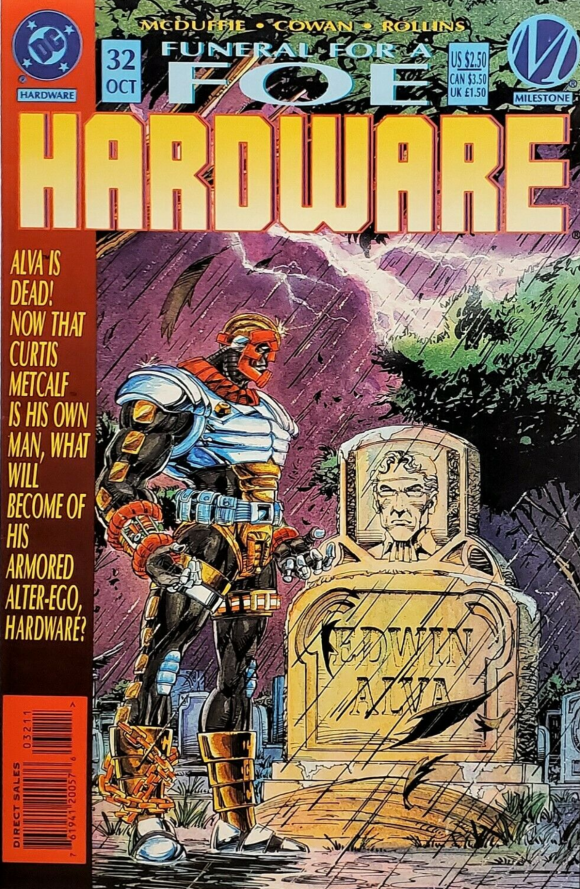
—
Icon #20, “The Big Bang Theory,” 1994, Milestone. Dakota’s beloved hero Icon reaches the end of his investigation into “the Big Bang” — the police action against Dakota’s gangs that led to mass death and the creation of superpowered beings. Recruiting the teenage hero Static and members of the enhanced gang called the Blood Syndicate, Icon’s journey through the worlds of politics and investigative journalism ends in tracking down the scientist behind the conspiracy in a quest for justice.
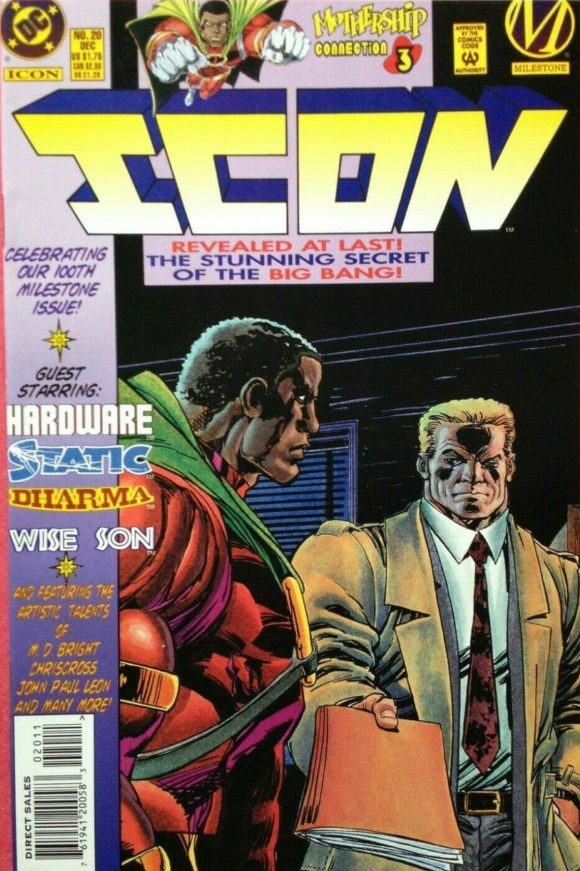
Illustrated by various artists from throughout the entire Milestone line of books, Icon #20 was the 100th Milestone comic book published and closed the circle of a mystery at the center of the superhero universe.
—
Milestone Forever, 2-issue miniseries, 2010, Milestone. In a grand tale that closed the loops on the Hardware, Icon and Static series from Milestone’s first iteration as a comic book publisher, Milestone Forever was a prestige format mini that gave the line’s most popular heroes resolution and a clear path forward while bringing the Milestone Universe to a cosmic end at the hands of a being with godlike powers named Dharma.
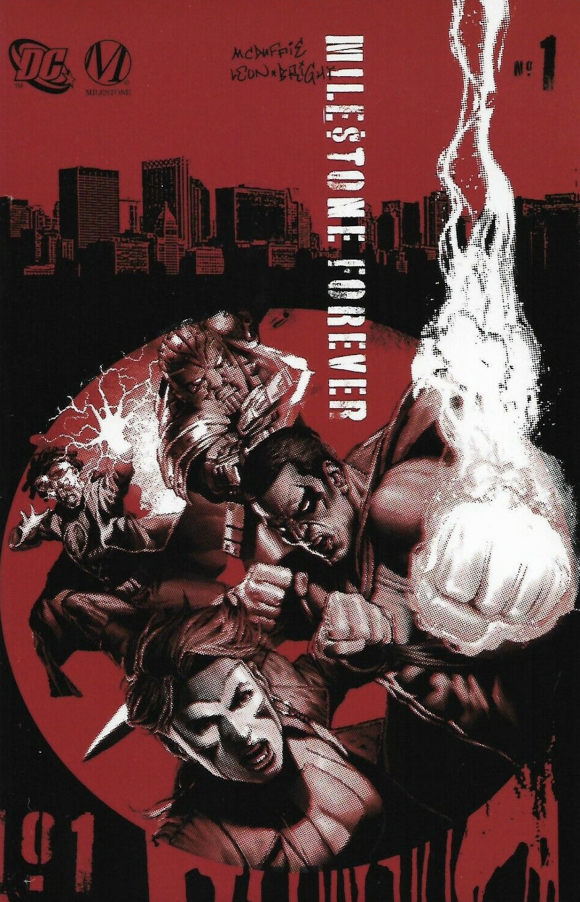
In the end of the series, the Milestone Universe and the DC Universe merged into a single continuity, with almost no one from either universe knowing the two were once separated by a dimensional wall.
Dwayne McDuffie would give the heroes he co-created a fond farewell and a bright future in a way that most creators never get to do. (Art by M.D. Bright, John Paul Leon, among others.)
—
MORE
— For more information on the Access Guide to the Black Comic Book Community, click here.
— For more information on the Dwayne McDuffie Fund, click here.
